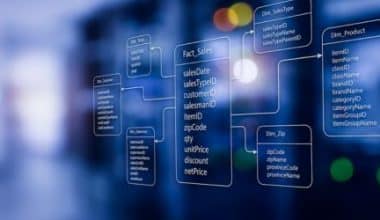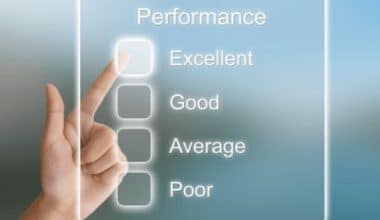Employee tracking and management tools are essential in today’s fast-paced, high-stakes business climate, and total workforce management system software provides just that. Workers in various industries, including retail, food service, on-call technical assistance, and others, are accustomed to working unpredictable schedules. This irregularity is starting to bleed over into the 9-to-5 sector as well, particularly when working extra, doing remote work, and traveling for work are becoming more commonplace and developing a work plan for employees so that they are aware of when and where they will be working may appear to be a straightforward task. The needs for workforce management go well beyond those of basic scheduling functions. The most effective elements of mobile workforce management system software make it easier to do a wide range of HR-related activities.
In this article, the ins and outs of the workforce management system software are broken down, and suggestions are provided for how to choose a solution that will meet the requirements of your business.
What Is A Total Workforce Management System TWMS?
At its most fundamental level, workforce management is concerned with all activities that must be carried out to guarantee that a workforce operates as smoothly as possible.
The primary purpose of it is to ensure that your company will, both now and in the future, have access to an adequate quantity of human capital to carry out its operations.
This includes evaluating many moving pieces, which might be difficult if you don’t have the right tools.
Because of this trend, more and more businesses are investing in workforce management software.
When you have the correct workforce management software features, it is simple to evaluate your company’s long-term business goals and ensure that your staff is well prepared to achieve them.
Because a growing number of companies now permit workers to work from home, either full-time or on a flex schedule, the importance of these functionalities has significantly increased.
How To Choose Workforce Management System
The field of human resources software provides an abundance of options to meet a wide range of requirements.
Some, like payroll software or a learning management solution, are geared specifically at completing one particular HR activity. Still, they may also include additional functions that cater to one or two additional requirements.
Other systems, such as a human resource information system (HRIS), will also give modules to fulfill your HR requirements.
The solutions for workforce management might be placed somewhere in this gray area between the two categories.
Before you begin your search, it is in your best interest to identify the areas of your company that is causing you the most trouble and to ascertain whether the features of workforce management software will be able to meet your requirements.
In the following, you will find a listing of some of the most common capabilities for managing a workforce.
You may get started by reviewing the list and analyzing how each of these characteristics can enhance your company’s operations.
The features that you decide to prioritize will become a requirements guide that you will be able to utilize when evaluating vendors that are on your shortlist.
What Are The Types Of Workforce Management System software?
Workforce management system software comes in a variety of forms. Some of these items are stand-alone in that they provide just one of the features below, while others provide an all-in-one answer.
- Scheduling software
- Attendance Software
- Time tracking software
- Absence management solutions
- Payroll software
- Employee engagement tools
- Customer relationship management tools
- Customer service & support ticketing solutions
- Workplace safety incident tracking software.
Features Of Workforce Management System Software
The following are some of the most popular characteristics seen in workforce management software:
Continue reading to learn more about what these capabilities can do and how they can help enhance your processes for managing your staff.
#1. Employee Scheduling
One of the most important functions of Total workforce management system software is scheduling.
Creating a basic timetable is a component of this. Still, one advantage of using this function is obtaining information about your company, enabling you to construct the greatest schedule possible.
The current requirements for personnel are determined by mobile workforce management system software by analyzing historical performance data and other relevant aspects.
This automatic function eliminates the need for guesswork regarding scheduling since it provides tools for calculating the personnel required for a certain project and any staffing gaps.
- Schedule Optimization
- Define Positions and Departments
- Multisite Support
- Automatic Scheduling
#2. Forecasting
The purpose of a forecasting function is to make assumptions about the future based on past data, current trends, and the desired path of the company.
Employee time and attendance habits can be analyzed through the trend analysis feature, providing useful information for scheduling or policy changes.
For instance, based on historical data, managers might allocate resources for a forthcoming project or peak season with the help of forecasting.
A wide variety of solutions let users contribute new variables to simulations, letting you look at customer requirements from every viewpoint.
- History-based Forecasting
- User-controlled Forecasting Engine
- Predictive Algorithms
#3. Performance Management
The performance management aspects keep tabs on the accomplishments of individual workers and the organization as a whole.
This research sheds light on the processes followed by the organization and identifies emerging patterns.
The behavior of employees in certain jobs, locations, and work periods can be evaluated using performance management tools, which can then be tied into workforce management.
With this information, managers can properly schedule employees.
- Performance Evaluation
- KPI Tracking
- Workforce Analysis
#4. Reporting
Those who utilize mobile workforce management system software have access to a reporting feature that may be used to create visually appealing and informative presentations of data.
The report format makes it simple to read and distribute information.
Regardless of their proficiency in analytics or familiarity with the underlying data, all stakeholders can get the required information by utilizing a report.
- Third-party Data Extraction
- Time Sheets
- Vacation Planning Reports
- Payroll Reports
- Scheduling Reports
#5. Workforce Mobility Management
This capability is one of the most in-demand regarding workforce management because mobile work is gaining popularity.
It can be critical to businesses that discover their personnel is no longer bound to a desk in the traditional sense.
Mobile capabilities enable users to access their labor management software from any device they want.
Employees can use the software to get their work done when going to different offices, working during their commute, or in any other situation where they don’t have access to a desktop computer.
This function is very helpful for organizations that have schedules that are always shifting, such as a restaurant or a customer service center in which personnel frequently switch shifts.
A mobile workforce management system will inform all workers of these alterations.
This will allow the business to stay on top of its scheduling and prevent any coverage gaps resulting from employees being unaware of the changes.
#6. Time Tracking
Time tracking features give instruments for monitoring and taking attendance, such as punching in and out on a clock.
These basic systems provide an additional layer of protection by including more cutting-edge components, such as biometrics and compliance checks.
Business owners can obtain an accurate picture of employee hours by using instruments that measure the passage of time, including tools that track attendance.
The study of this data will offer the decision-makers the information they need to tailor the company’s policy regarding personnel management to meet the requirements of their business.
#7. Integrations
The ability of workforce management software to interface with other human resource management systems allows for an extensive collection of functionalities.
Connecting your company’s human resource management software to third-party platforms ensures its functionality is always up to date.
You can add on integrating a workforce management system with an HRM system or other types of software to an initially standalone workforce management tool.
This type of integration is referred to as add-on integration.
- HRM Integration
- Time and Attendance Software Integration
- Payroll Software Integration
What are the Benefits of Workforce Management System Software?
Workforce Management System software makes it easier for management to simplify scheduling, manage attendance and time tracking, optimize performance management, and promote employee safety.
The correct workforce management solution, when it is put into action and used efficiently, can assist companies in some ways, including the following:
- Save time, eliminate bottlenecks, and reduce mistakes by automating formerly laborious processes.
- Make better decisions based on real-time data analysis and accurate, up-to-date information about your staff.
- Increase payroll accuracy by using software that automatically reconciles time tracking, paid time off, documented overtime, etc. This will help to reduce the number of instances of human error that can occur as a result of manually entering data and doing calculations.
- Consult data on the real-time scheduling of your staff and make necessary adjustments to ward off issues such as understaffing. Proactively flag and address potential scheduling conflicts before they arise. The best workforce software allows managers to make intelligent schedules by filtering tasks according to department, project, job, or region.
What are the Types of Workforce Management Systems?
The types of workforce management system software include:
- Scheduling software
- Attendance Software
- Time tracking software
- Absence management solutions
- Payroll software
- Employee engagement tools
- Customer relationship management tools
- Customer service & support ticketing solutions
What Is the Difference Between WFM and WFO?
Whereas WFM is primarily concerned with the management of call center staff, WFO systems supply the backing managers required to make decisions based on actual data.
What Is Effective Workforce Management?
The term “effective workforce management” (WFM) refers to an organization’s systematized approach to boosting worker output.
WFM entails accurately estimating the number of workers needed to complete a project and then designing and implementing a work schedule that maximizes the efficiency and effectiveness of the team.
How Do You Create Workforce Management?
The following are the steps in creating a mobile workforce management system software:
- Processes and regulations are being standardized.
- Time and attendance records are being computerized.
- Automation of employee scheduling functions.
- Review employee self-service options.
- Implementation of proactive absence management procedures.
How Do You Implement Workforce Management?
Follow these outlined steps to implement total workforce management system software fully:
- Business goals and hiring requirements should be in sync.
- Examine and Forecast Future Talent and Skill Requirements
- Perform a Skill Gap Analysis and Assess the Current Supply of Talent
- Prepare for different outcomes
- Create and implement a plan
- Monitor the progress and evaluate the Outcome
What are the Main Principles of Workforce Planning?
The following are the Main principles of workforce planning:
- Strategic planning
- Analyze the plan
- Develop and activate the plan
- Implement the plan
- Monitor, evaluate, and revise the plan
Conclusion
In conclusion, Workforce Management System Software for managing employees is fundamental to the operations that make firms successful.
These systems’ fundamental capabilities center on scheduling, planning, and subsequent attendance monitoring.
Tools for managing employee performance can help you identify high achievers and fill skill gaps in your staff.
The latest analytics software can analyze data and provide valuable insights, allowing for more prudent decision-making.
Extras like secure setup and rollout guarantee a problem-free experience with the system.
Understanding the requirements of your company and the state of your current environment are both crucial steps in developing a labor management system.
Companies that already have an HR management system in place will find this to be especially true.
There are a variety of human resource management platforms that incorporate workforce management features; knowing where you stand in terms of existing processes is the first step in finding the right one for your business.
- WORKFORCE MANAGEMENT SOFTWARE: How It Works [+Top 10 Picks]
- Top 6 Tips for Effective Workforce Management
- WORKFORCE MANAGEMENT TOOLS: Best Workforce Management Tools
- THE BEST ATTENDANCE MANAGEMENT SYSTEMS FOR YOUR WORKPLACE
- LABOR MANAGEMENT SYSTEM: How Does It Work?






